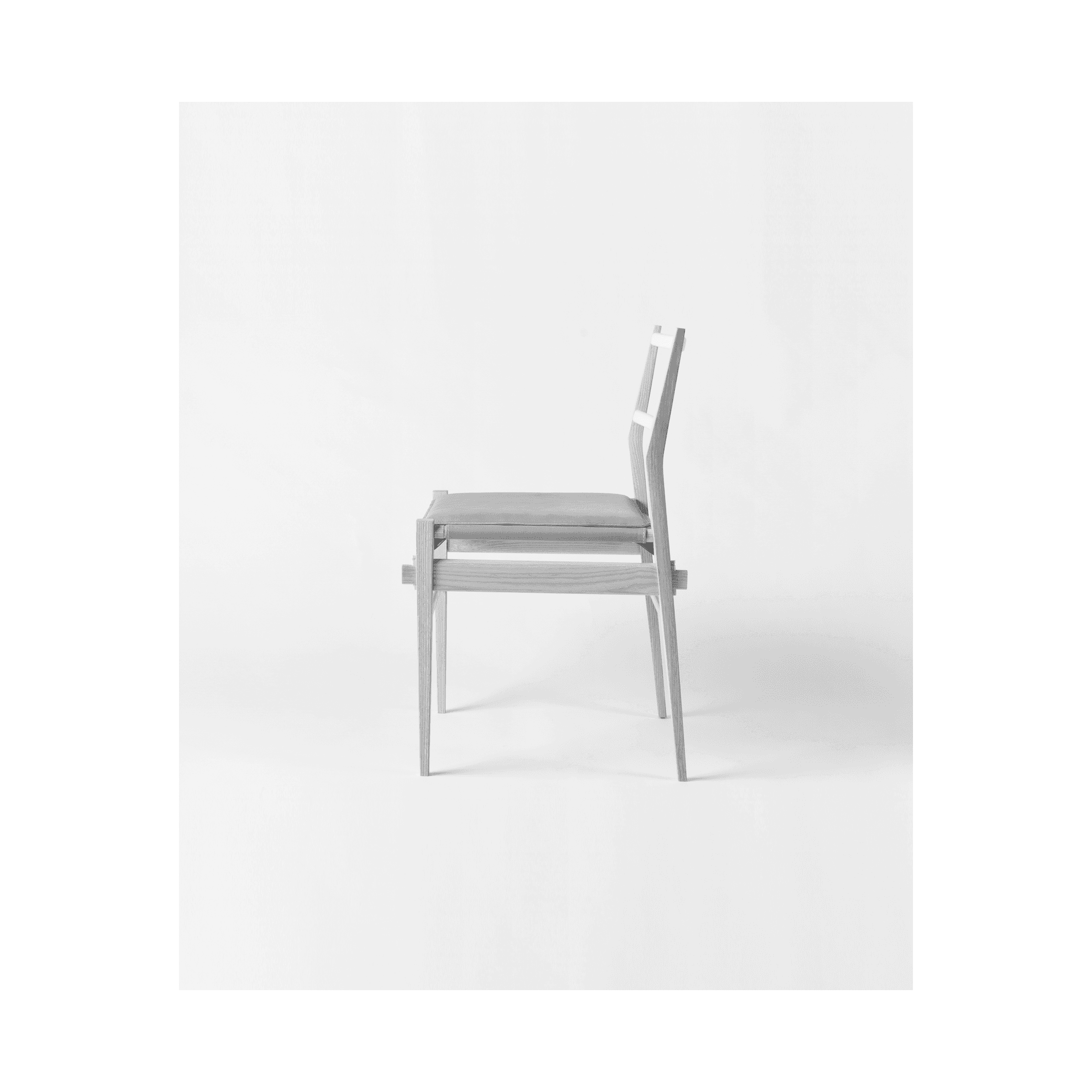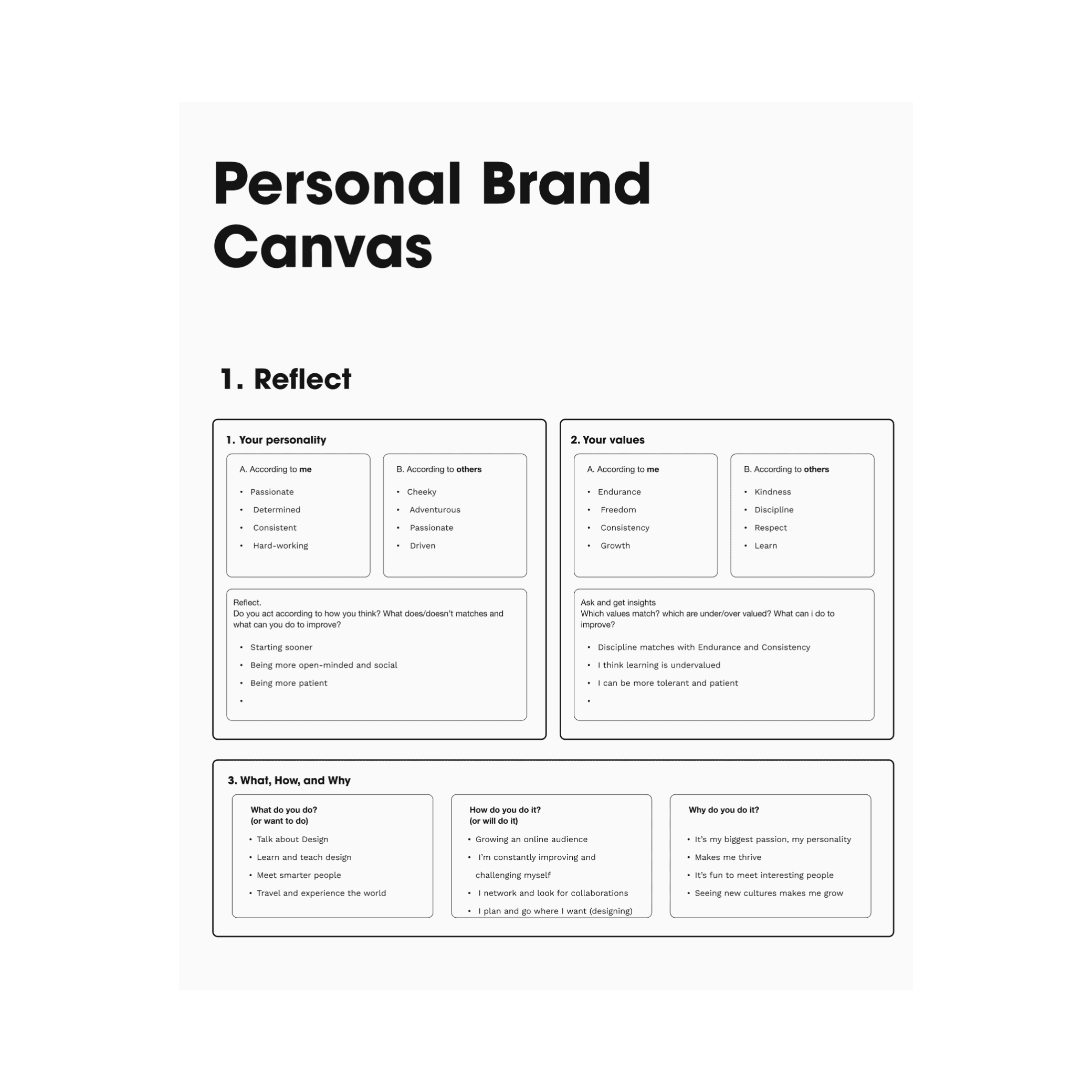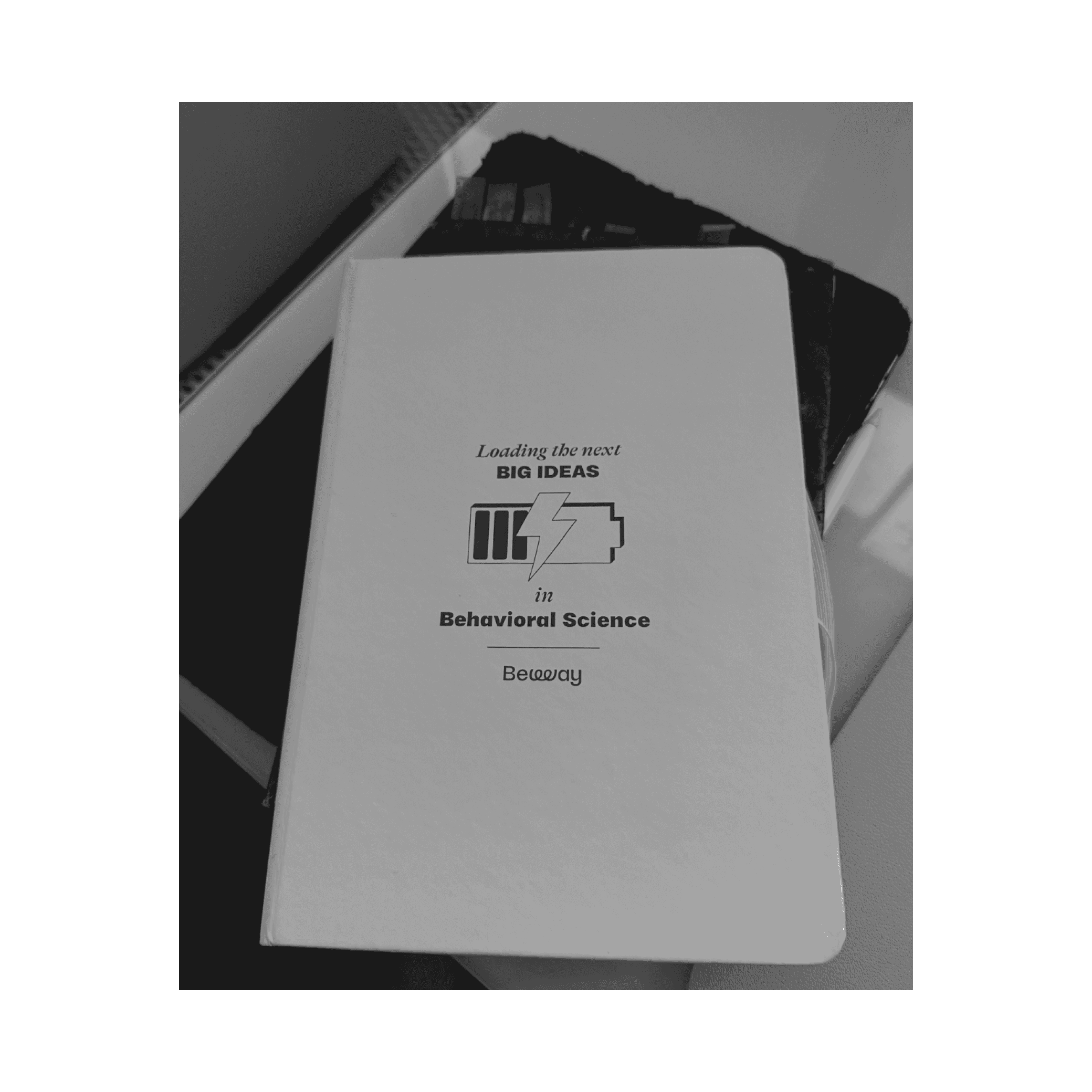Published
15 July, 2024
by
Kaleb Cardenas
Crafting a Winning Design Portfolio: Insider Secrets from a 12-Year Design Maestro
Designing a portfolio is a daunting task for any designer. The common challenge we all share is explaining the hard work we put into projects in simple words, or rather, with storytelling. Communicating the value we can add to a team is a fundamental skill that’s easier said than done.

The Daunting Task of Designing a Portfolio
It’s important to clarify what a portfolio is and why designers need this artifact. The reality is that a portfolio’s purpose is defined from the beginning, and it’s only the designer who can define it. People looking for internships, junior, senior or even director roles have different experiences and outcomes. A Portfolio is a strategic tool that helps you shape the way you think and allows you to articulate your processes to get the best out of your projects.
My Journey with Portfolios
I’ve been building my portfolio since 2011 when I applied for my Erasmus in Stockholm, Sweden. The very first version was a compilation of school projects, none of them are on my website today for obvious reasons. However, I’ve continued to update my projects almost every year, through different platforms and mediums. More than an obligation, I see it as a reflection exercise. It helps me to interact with my thoughts and learnings from the multiple areas of design I’ve explored.—-
First Principles of Building a Winning Portfolio
This article will try to explore the first principles of building your personal brand and communicating your work efficiently. These principles are not guidelines or a blueprint, the point is to enable younger designers to set the foundations for writing and creating a picture for their professional identity.
Be Open and Curious
Try to collaborate with as many people as possible. Don’t be selective in the beginning on the projects you can make or collaborate with. Learn from more experienced designers and experience what is like to build a project with the guidance of a team that will help you grow. When you’re young and you’re starting your career, you must hustle. There’s no other way to grow and stack potential projects that can go into your skill set.
2. Document Everything About Your Process. Consistency is Key
Most professors from Design schools will ask you to take pictures of your project, save your sketches and write a case study. They are right. I’ve been saving documents since day one and it’s one of the best habits I have as a designer. I’ll give you a little hack, carry a small pen in your wallet, pocket or backpack. Don’t rely too much on technology, any piece of paper can be your canvas.
3. Define the Problem. Keep it Narrow and Objective
Humans need to solve problems to thrive. Our job as designers is to define the right thing to solve in a project. Framing is essential to kickstart your narrative and catch your audience’s attention. A problem is never too broad or narrow; make it contextual and something people can relate to.
4. Be Original About Your Methodology to Find Solutions
Design Thinking helps us follow a process to understand customers, synthesise information and develop insightful projects. Yet, every process is unique and needs to be communicated. Describe your failures and how you overcame them. Let the viewer understand that your abilities go beyond following a framework and that you can reinvent yourself every time.
5. Share Your Key Learnings and How You Will Apply Them in the Next Project
The process is important but realistically people care about the result. The result includes all the things you learned from a project. This is the cherry on the pie for most managers. People will hire for your experience, and especially how you plan to apply them in the next projects.
The Portfolio Creation Process
Once you set your own foundations and define a style you want to follow for your personal brand and portfolio, then the fun begins. Collect ideas, visuals and inspiration that are relevant to you today. I’ve changed a lot in the last decade and that can be reflected in subtle changes in my project and website.
Creating a portfolio can have different routes and the best way to start is to start. Don’t overthink it or try to make it polished from the first draft. Again, use first principles and the design process for this endeavour. Use any platform or tool of your preference. There are a ton of options today for you to focus on the content rather than learning how to make something beautiful and flashy.
Keep in mind that aesthetics are essential to attract eyeballs. Make sure you align with basic design principles that make people stop and give your website a shot. Most people will scan your projects, and making sure everything is harmonious will invite people to know more about your work.
Staying Motivated and Disciplined
Finding the motivation to work on such a titanic task is hard. You’ll have to spend hours, weekends, and holidays on this job. The payoff is worth it. Be disciplined and enjoy the process. If you’re not in a rush to find a job, use it as a meditative process. Let the creative juices flow and make the portfolio your own.
I’ve helped hundreds of students build their portfolio and the most common issue I see is that they lack a plan. Without a plan, it’s hard to visualise the end goal and you’ll lose motivation. Create milestones and gamify the process. Reward yourself every time you finish a case study, page, or section. Find a way to get quick wins to stay motivated.
Share your progress as you build the portfolio, don’t keep it to yourself and wait until it’s perfect. We all doubt our work when we design in a vacuum. Don’t be afraid to show your growth, we all started from somewhere and never reached excellence. Yet, compound hours of practice and hard work and you’ll see an evolution. Who knows? You might like what you see.
Making an Impact with Your Portfolio
In one of my final projects at University, a professor once told me: “It doesn’t matter what you do, as long as it generates impact.” I’m not talking about revolutionising a product, it’s about how much value you can add with your contribution. The word impact is abused and subjective, but it can be quantified. Set the metrics for your projects and portfolio, what you would like to achieve and work backwards. If you don’t define the goalpost, someone will do it for you.
By defining clear metrics and goals for the impact you want to make, you can then focus on standing out from other designers. This involves making memorable experiences for your viewers and being a curator of your projects. As you grow in life and as a designer, you’ll have the opportunity to transform bits of your personality and work, allowing you to continually evolve your portfolio and the impact it has.
Conclusion: Embrace the Journey
Building a portfolio sucks. It sucks because it’s never over; it sucks even more because you’ll never love it. So where do we go from here? Is it worth it? Would you continue to build your website over the years?
My final recommendation is to stop seeing your portfolio as an obligation. I recommend you to use it as a self-discovery exercise. Don’t be too hard on yourself, don’t let others tell you that you are not good enough. There are tons of portfolios out there that are amazing, people with fantastic talent with projects that belong in an exhibition. The one thing I can guarantee you is, they sucked in the beginning. The only difference between you and them is that they persevered and continue to enjoy the process. Remember, consistency is key — building a portfolio is an endurance challenge. Be resilient, adapt, and keep growing.
—-
I would be happy to review your portfolio. Please send me a direct message and I’ll do my best to help!
Published
15 July, 2024
by
Kaleb Cardenas
Crafting a Winning Design Portfolio: Insider Secrets from a 12-Year Design Maestro
Designing a portfolio is a daunting task for any designer. The common challenge we all share is explaining the hard work we put into projects in simple words, or rather, with storytelling. Communicating the value we can add to a team is a fundamental skill that’s easier said than done.

The Daunting Task of Designing a Portfolio
It’s important to clarify what a portfolio is and why designers need this artifact. The reality is that a portfolio’s purpose is defined from the beginning, and it’s only the designer who can define it. People looking for internships, junior, senior or even director roles have different experiences and outcomes. A Portfolio is a strategic tool that helps you shape the way you think and allows you to articulate your processes to get the best out of your projects.
My Journey with Portfolios
I’ve been building my portfolio since 2011 when I applied for my Erasmus in Stockholm, Sweden. The very first version was a compilation of school projects, none of them are on my website today for obvious reasons. However, I’ve continued to update my projects almost every year, through different platforms and mediums. More than an obligation, I see it as a reflection exercise. It helps me to interact with my thoughts and learnings from the multiple areas of design I’ve explored.—-
First Principles of Building a Winning Portfolio
This article will try to explore the first principles of building your personal brand and communicating your work efficiently. These principles are not guidelines or a blueprint, the point is to enable younger designers to set the foundations for writing and creating a picture for their professional identity.
Be Open and Curious
Try to collaborate with as many people as possible. Don’t be selective in the beginning on the projects you can make or collaborate with. Learn from more experienced designers and experience what is like to build a project with the guidance of a team that will help you grow. When you’re young and you’re starting your career, you must hustle. There’s no other way to grow and stack potential projects that can go into your skill set.
2. Document Everything About Your Process. Consistency is Key
Most professors from Design schools will ask you to take pictures of your project, save your sketches and write a case study. They are right. I’ve been saving documents since day one and it’s one of the best habits I have as a designer. I’ll give you a little hack, carry a small pen in your wallet, pocket or backpack. Don’t rely too much on technology, any piece of paper can be your canvas.
3. Define the Problem. Keep it Narrow and Objective
Humans need to solve problems to thrive. Our job as designers is to define the right thing to solve in a project. Framing is essential to kickstart your narrative and catch your audience’s attention. A problem is never too broad or narrow; make it contextual and something people can relate to.
4. Be Original About Your Methodology to Find Solutions
Design Thinking helps us follow a process to understand customers, synthesise information and develop insightful projects. Yet, every process is unique and needs to be communicated. Describe your failures and how you overcame them. Let the viewer understand that your abilities go beyond following a framework and that you can reinvent yourself every time.
5. Share Your Key Learnings and How You Will Apply Them in the Next Project
The process is important but realistically people care about the result. The result includes all the things you learned from a project. This is the cherry on the pie for most managers. People will hire for your experience, and especially how you plan to apply them in the next projects.
The Portfolio Creation Process
Once you set your own foundations and define a style you want to follow for your personal brand and portfolio, then the fun begins. Collect ideas, visuals and inspiration that are relevant to you today. I’ve changed a lot in the last decade and that can be reflected in subtle changes in my project and website.
Creating a portfolio can have different routes and the best way to start is to start. Don’t overthink it or try to make it polished from the first draft. Again, use first principles and the design process for this endeavour. Use any platform or tool of your preference. There are a ton of options today for you to focus on the content rather than learning how to make something beautiful and flashy.
Keep in mind that aesthetics are essential to attract eyeballs. Make sure you align with basic design principles that make people stop and give your website a shot. Most people will scan your projects, and making sure everything is harmonious will invite people to know more about your work.
Staying Motivated and Disciplined
Finding the motivation to work on such a titanic task is hard. You’ll have to spend hours, weekends, and holidays on this job. The payoff is worth it. Be disciplined and enjoy the process. If you’re not in a rush to find a job, use it as a meditative process. Let the creative juices flow and make the portfolio your own.
I’ve helped hundreds of students build their portfolio and the most common issue I see is that they lack a plan. Without a plan, it’s hard to visualise the end goal and you’ll lose motivation. Create milestones and gamify the process. Reward yourself every time you finish a case study, page, or section. Find a way to get quick wins to stay motivated.
Share your progress as you build the portfolio, don’t keep it to yourself and wait until it’s perfect. We all doubt our work when we design in a vacuum. Don’t be afraid to show your growth, we all started from somewhere and never reached excellence. Yet, compound hours of practice and hard work and you’ll see an evolution. Who knows? You might like what you see.
Making an Impact with Your Portfolio
In one of my final projects at University, a professor once told me: “It doesn’t matter what you do, as long as it generates impact.” I’m not talking about revolutionising a product, it’s about how much value you can add with your contribution. The word impact is abused and subjective, but it can be quantified. Set the metrics for your projects and portfolio, what you would like to achieve and work backwards. If you don’t define the goalpost, someone will do it for you.
By defining clear metrics and goals for the impact you want to make, you can then focus on standing out from other designers. This involves making memorable experiences for your viewers and being a curator of your projects. As you grow in life and as a designer, you’ll have the opportunity to transform bits of your personality and work, allowing you to continually evolve your portfolio and the impact it has.
Conclusion: Embrace the Journey
Building a portfolio sucks. It sucks because it’s never over; it sucks even more because you’ll never love it. So where do we go from here? Is it worth it? Would you continue to build your website over the years?
My final recommendation is to stop seeing your portfolio as an obligation. I recommend you to use it as a self-discovery exercise. Don’t be too hard on yourself, don’t let others tell you that you are not good enough. There are tons of portfolios out there that are amazing, people with fantastic talent with projects that belong in an exhibition. The one thing I can guarantee you is, they sucked in the beginning. The only difference between you and them is that they persevered and continue to enjoy the process. Remember, consistency is key — building a portfolio is an endurance challenge. Be resilient, adapt, and keep growing.
—-
I would be happy to review your portfolio. Please send me a direct message and I’ll do my best to help!

